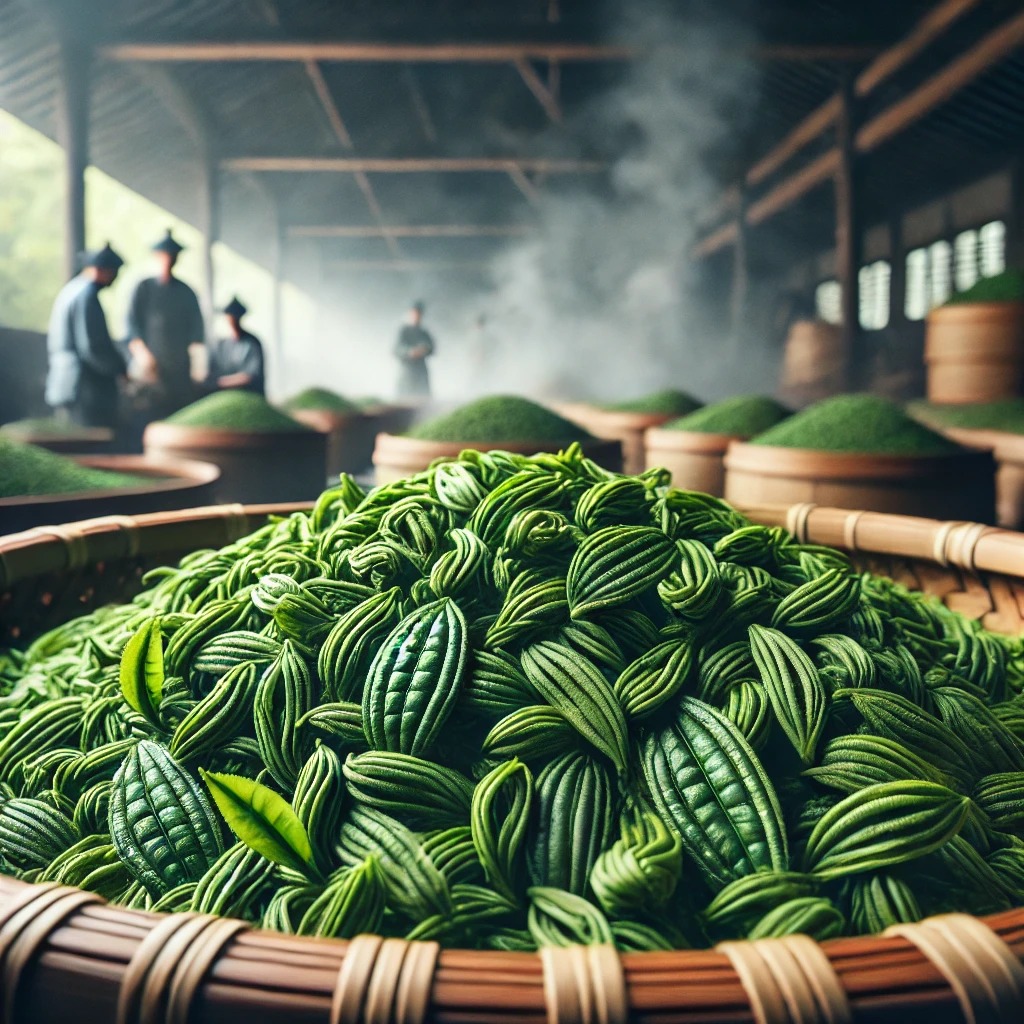In the diverse world of Chinese teas, certain varieties like Tie Guan Yin and Bi Luo Chun have stood the test of time, offering unique flavors that reflect their rich historical backgrounds and cultural significance. Tie Guan Yin, a renowned oolong tea, and Bi Luo Chun, a celebrated green tea, are both highly prized in China and around the world. This article explores the distinctions between these two famous teas, highlighting their origins, processing techniques, flavor profiles, and the best ways to enjoy them.
Tie Guan Yin: The Iron Goddess of Mercy
Origin and History Tie Guan Yin originates from Anxi in Fujian Province, China. It translates to "Iron Goddess of Mercy," a name derived from a local legend about a poor farmer who was rewarded by the Goddess of Mercy for his piety with a rare tea shoot. This tea has become synonymous with oolong tea's finest qualities and is celebrated for its complex production process and exquisite flavor. It has been a staple in Chinese tea culture since the 19th century, embodying a perfect blend of rich history and artisanal craftsmanship.
Processing Techniques The production of Tie Guan Yin involves a series of meticulous steps that include withering, rolling, oxidizing, and a final roasting. Unlike other teas, its oxidation process is stopped when it's partially oxidized, giving it a unique flavor that sits between green and black teas. The leaves are then rolled into tight balls, which unfurl beautifully when steeped, releasing their array of flavors and aromas.
Flavor Profile Tie Guan Yin is celebrated for its bright floral aroma and a complex taste profile that includes hints of orchids and a subtle creaminess. Its finish is long and satisfying, with a slight sweetness and a velvety mouthfeel. The depth and richness of its flavor are enhanced with each steeping, making it a favorite among oolong enthusiasts.
Bi Luo Chun: Delicacy of Spring
Origin and Growth Bi Luo Chun is primarily cultivated in the Dongting mountain region near Lake Tai, Jiangsu province. Its name, meaning "Green Snail Spring," refers to the tight and snail-like shape of the tea leaves which are harvested early in the spring. Recognized as one of China's top ten teas, Bi Luo Chun's production dates back to the Sui Dynasty, making it a historic and prestigious green tea choice.
Processing Techniques The making of Bi Luo Chun Green Tea involves plucking only the tender shoots of the tea plant. These are then pan-fried to halt oxidation, which preserves their natural green color and delicate flavors. The leaves are carefully rolled by hand to achieve their distinctive spiral shape, which delicately unfurls upon brewing.
Flavor Profile Bi Luo Chun is known for its fresh, vegetal flavor with underlying floral notes and a hint of fruitiness, often compared to apricots or peaches. The tea is light yet layered, with a sweetness that complements its slight astringency, offering a clean and refreshing finish. Its aroma is potent and uplifting, often filling the room with its delightful scent.
Brewing Tips
Tie Guan Yin For the best brewing results, use water at about 90-95°C and steep the tea for 1-3 minutes, depending on desired strength. Tie Guan Yin can be steeped multiple times, with each infusion bringing out more of its complex flavors.
Bi Luo Chun Bi Luo Chun should be brewed at a lower temperature, around 80°C, to avoid scalding the delicate leaves. A quick steep of 1-2 minutes is ideal to extract its vibrant flavors without bitterness. This tea is best enjoyed fresh and in fewer infusions.
Conclusion
Tie Guan Yin and Bi Luo Chun offer tea lovers distinctly different sensory experiences rooted in the rich tapestry of Chinese tea culture. Whether one prefers the floral and creamy notes of Tie Guan Yin or the fresh and fruity subtleties of Bi Luo Chun, both teas provide a window into the sophisticated world of Chinese teas, showcasing the artistry and tradition that define this ancient beverage. Each sip not only offers a taste but also a glimpse into the regions and histories that shape these exceptional teas.





Comments